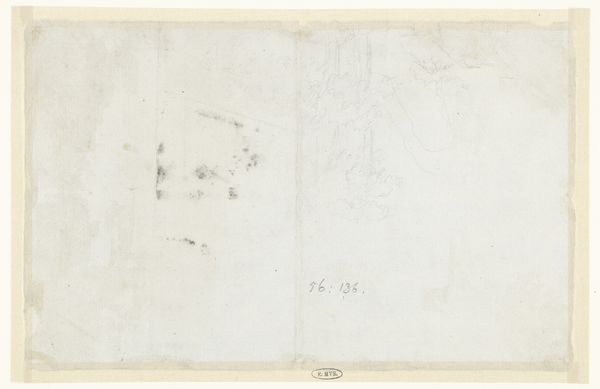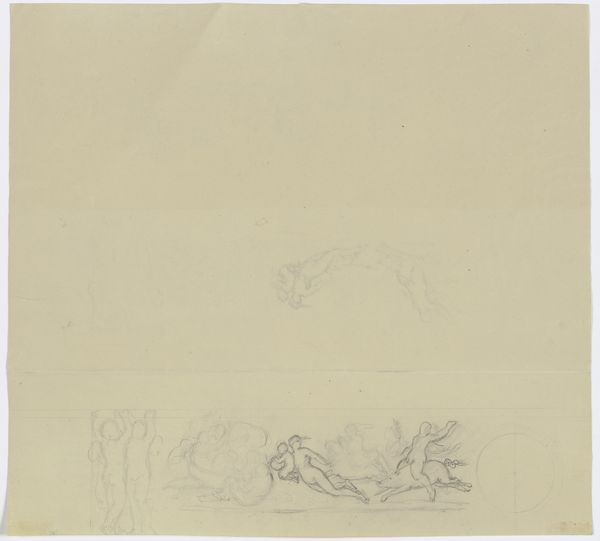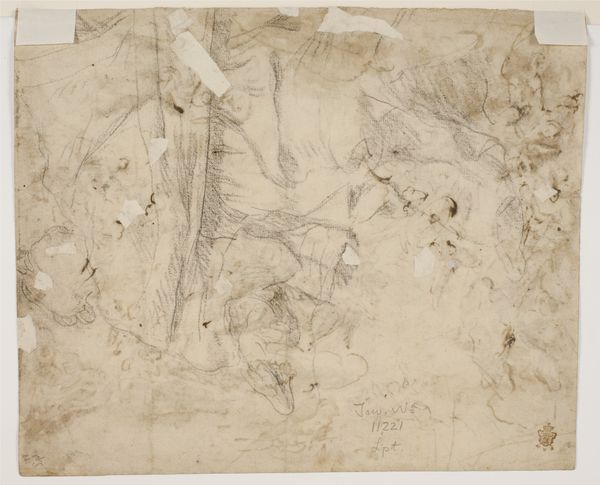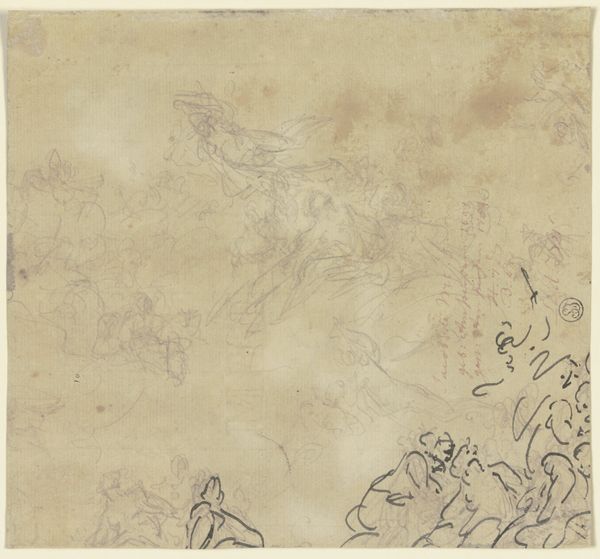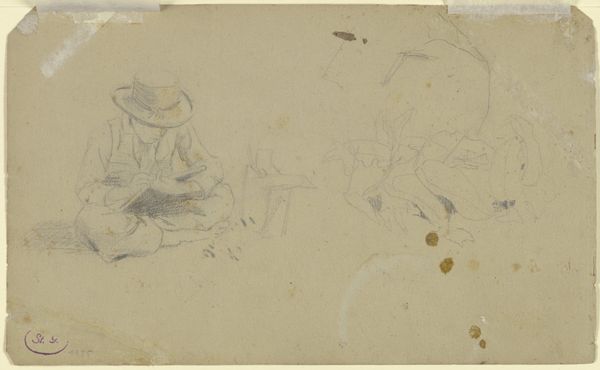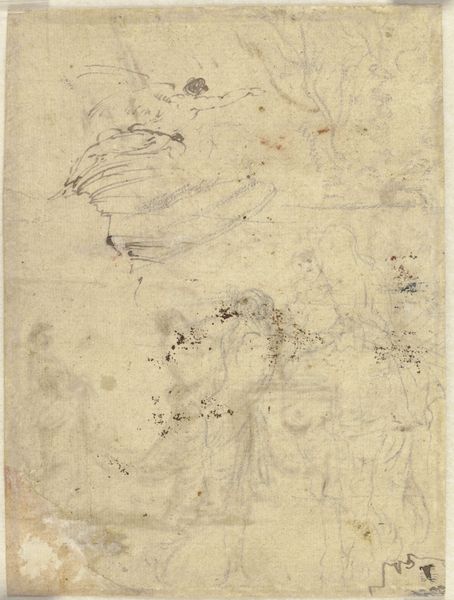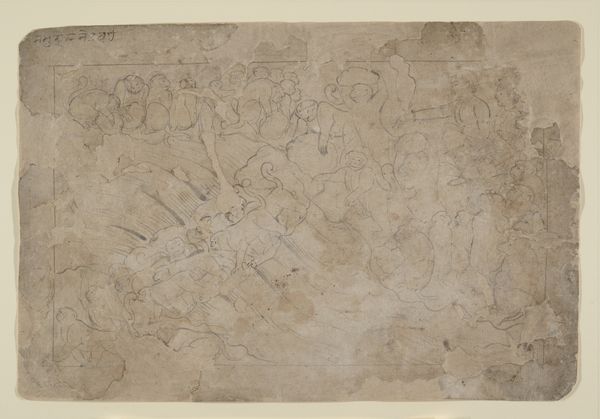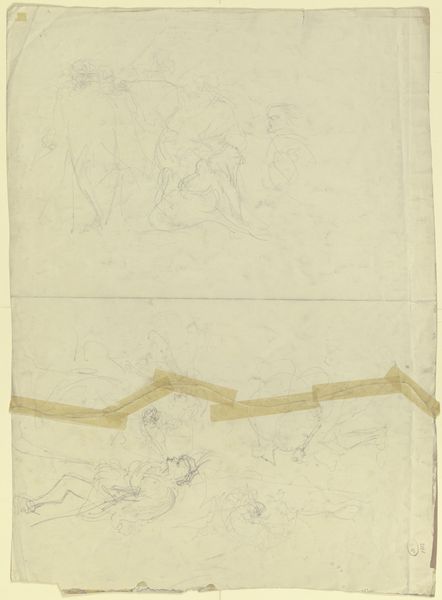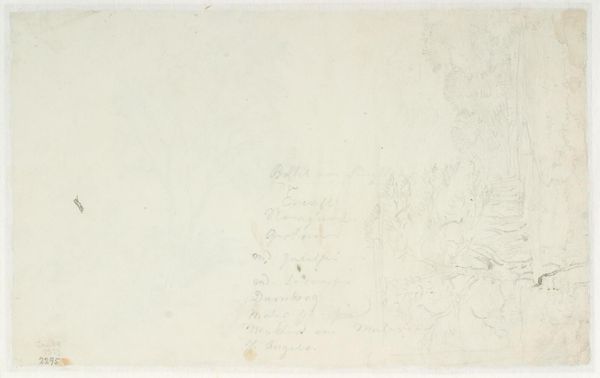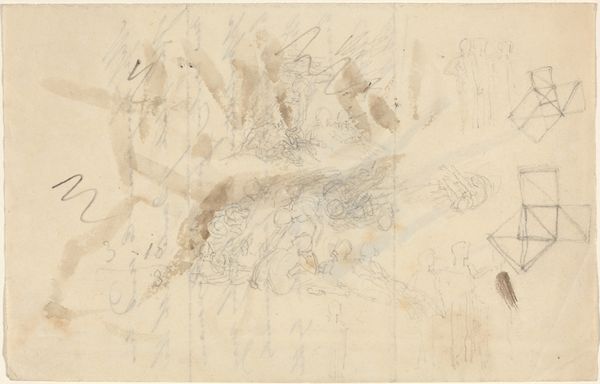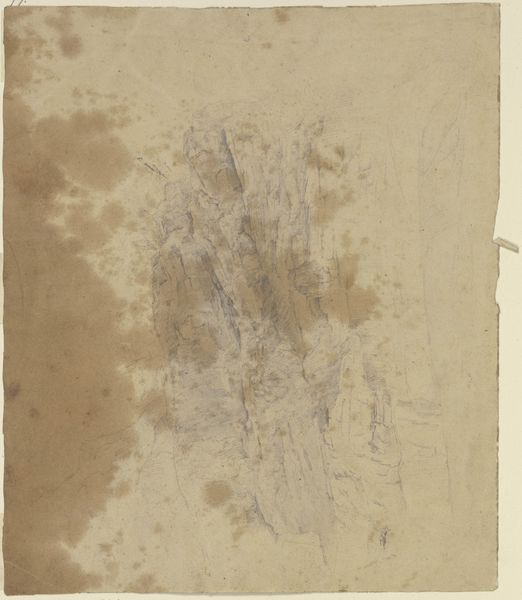
drawing, ink, indian-ink, pencil
#
portrait
#
drawing
#
baroque
#
ink painting
#
etching
#
ink
#
sketch
#
indian-ink
#
pencil
#
15_18th-century
#
sketchbook drawing
#
history-painting
Copyright: Public Domain
Curator: This sketch, aptly titled "Several Groups of People," is an ink and pencil drawing now residing at the Städel Museum, attributed to Gaspare Diziani, who worked primarily during the 18th century. It offers us a glimpse into the artistic practices of the Baroque era. Editor: My first impression is of movement— a kind of restless energy. Despite the unfinished nature, the artist has captured these figures in dynamic poses. There's a certain weightiness, yet a graceful fluidity to the ink work. Curator: Precisely. Diziani, though somewhat lesser-known today, was a key figure in the Venetian artistic scene, contributing significantly to history paintings and decorative cycles for churches and palaces. These drawings served as preparatory studies, enabling artists like Diziani to experiment with composition and form. How does the unfinished state shape our contemporary view of this work? Editor: It opens up a conversation around authorship, process, and the very definition of a "finished" artwork. Are we meant to see the artist's hand so explicitly? The looseness, combined with what seem like deliberate erasures, raises questions about the artist's own uncertainties, and his possible exploration of various artistic options. Curator: I agree. Thinking about it in the context of its historical function – that it was intended only as a stepping-stone to the “real” work of art– adds another dimension to my view. Consider the social implications. Back then, such preparatory works were often handled by workshop assistants, highlighting the role of artistic labor within the studio. Now we celebrate this drawing as its own fully achieved artifact. Editor: Definitely. And these groupings...the arrangement seems almost theatrical. It makes me consider how gender, class, and identity are constructed through these performative groupings, the way people stage themselves in society, then and now. How might a feminist reading complicate our view of this piece? Curator: Well, if we approach the piece through gender, the sketched nature renders the body unfixed, and open to interpretations beyond merely mimetic representations. These figures seem actively negotiated into position. And I love how the rawness challenges institutional notions of polish, thereby upsetting our art historical expectations. Editor: These sketches allow us to think beyond formal mastery. Now I see "Several Groups of People" not just as a draft, but a dynamic and incomplete artwork of artistic possibilities. Curator: I couldn’t agree more, what you call ‘artistic possibilities’ seems to unlock a greater meaning here today than even it did in Diziani's time.
Comments
No comments
Be the first to comment and join the conversation on the ultimate creative platform.
